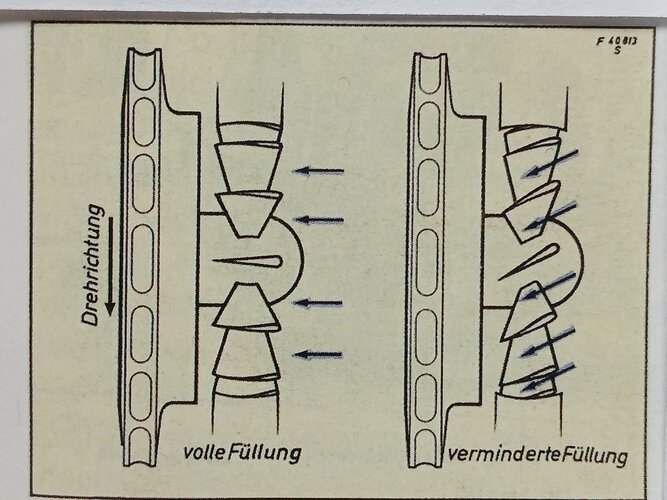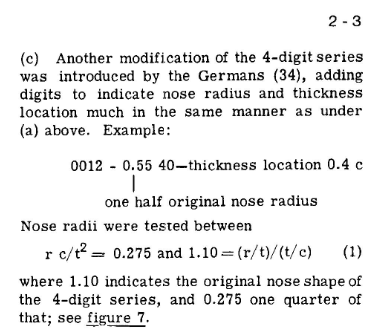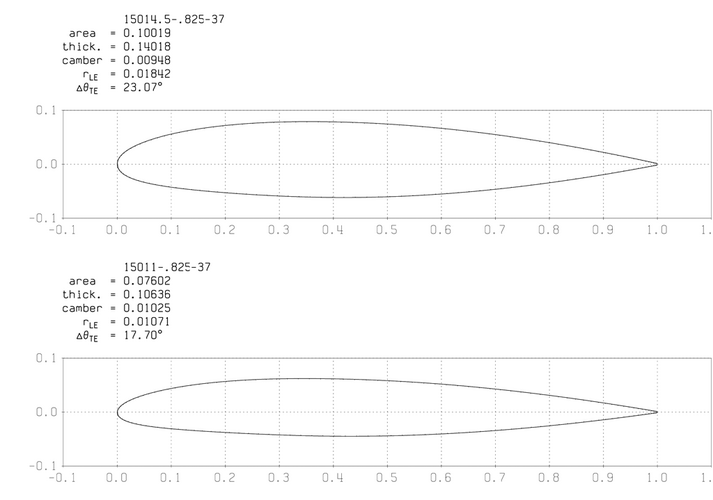COPY.
=====
Report on Fighter Aircraft Comparative Trials at the Italian Test Centre Guidonia.
In the period from 18.2.1943 to 21.2.1943, comparative trials of German and Italien aircraft were performed at Guidonia. For comparison to the Bf 109 G 4 and Fw 190 A 5, the following fighter aircraft were present: Macchi 205 V, Macchi 205 N, Reggian 2005 and Fiat G 55.
I. Type Characteristics
Type designation; Engine; Area in square meters; Flying weight in kg; Petrol supply in L; Rounds of 2 cm ammunition; Rounds of 12.7 mm ammunition; Propeller
(Insert table here)
II. General
The exterior shape and the general impression of the aircraft displayed there were good. The achieved performance is partially owed to the very small radiators. This is especially the case for the Macchi 205 V and the Reggiane 2005.
The existing armament integration made a good impression. The mounting of the cannon in the wing was well-designed. Concerning further equipment details of the aircraft, it has to be pointed out that there is considerable luxury: Hydraulic coolant and oil cooler flap actuation, hydraulic sand filter actuation, hydraulic seat adjustment and hyraulic flap and undercarriage actuation. The armament operation made a simple and sturdy impression. There is no perfect standardization of the 4 cockpit cabins, though some pieces of equipment and instruments were the same in all 4 aircraft. The instrument arrangement was, judged by German requirements, confusing and not up to the purpose. Standardization was present for the cockpit hood. All 3 aircraft had a standardized cockpit hood - forward section and mid section. Additionally, the armoured seats and the head armour was standardized in all aircraft.
III. Tactical-technical comparison
Of the 4 aircraft that were involved in the comparison, the Fiat G 55 receives such good marks that it requires comparison by tactical-technical iuxtaposition:
The advantages of the Fiat G 55 are: Larger Area, better aspect ratio, lower wing loading (185 kg per square meter). Compare to Bf 109 G 5 = 195 kg per square meter and Fw 190 A 5 = 210 kg per square meter. Owing to this, the aircraft has better characteristics, which effect a higher ceiling, better turning manoeuvrability and better climb rate at high altitude. The latter does not appear to be entirely correct, as the power loading is higher than that of the Bf 109 G 4.
Another advantage is the armament integration. The current armament of 4 12.7 mm machine guns and 1 151/20 cannon (200 rounds), whch are mounted centrally in the fuselage, features a sufficient ammunition supply, 360 rounds per barrel. The armament of the Bf 109 G 4 however is with 1 151/20 cannon and 2 7.9 mm MG with 500 rounds per barrel has to be called far too light. For development, 3 151/20 cannon and 2 12.7 mm are planned. The armament is very good and is integrated without the heavy negative impact on flying characteristics and performance that currently affects the German fighter aircraft when armament kits (Rüstsätze) are mounted.
The flying charactistics are not as good as those of the Bf 109 G 4 and the Fw 190 A 5. The view is somewhat worse than for the Bf 109 G 5 and Fw 190 A 5. A serious disadvantage of the Fiat G 55 versus the German fighter aircraft is the unsuitability for the fighter bomber role. This mustn't be ignored, since the fighter bomber role has turned out a top priority in all theatres.
It appars to be an advantage of the Fiat G 55 that the airframe is well suited for mounting a DB 603. This provides a considerable increase of performance, and the existing speed disadvantage (ca. 25 km/h slower than the Bf 109 G 4 and Fw 190 A 5) becomes obsolete. In addition, the aircraft mounts an additional 3 cm cannon.
To state a summary:
The Fiat G 55 is equal to the German fighters in climb and ceiling, superior in armament and range, inferior in speed (currently, 25 km/h), while it has to be taken into account that the Italian DB 605 yields 100 HP less.
Since according to the statement of the designer the DB 603 can be mounted without signicant modifications and changes, the aircraft becomes very attractive even considering the current performance, since with the DB 603, it would be superior to all current fighters in all respects.
IV. Evaluation of the individual flights and aircraft
1.) Macchi 205 V. Aircraft was developed from the airframe of the Macchi 202. The airframe has not been changed from that of the Macchi 202 with DB 601. Merely the DB 605 has been installed.
(Technical data skipped)
Assessment:
Aircraft is unstable longitudinally. Elevator is very effective. This causes tendency for stalling. The aileron forces are good, and the roll manoevrability as well. View during take-off mediocre. In flight, limited to the upper front - to the sides and to the back good.
2.) Macchi 205 N. Aircraft represents the series production version with DB 605.
(Technical data skipped)
Assessment:
Aircraft has good control surface effectiveness. It is very solid in the central position (gunnery runs). Roll manoevurability is good. Control forces slightly lower than those of the Bf 109 G. For climb and tropical operations, the coolant radiator is insufficient. (Coolant) consisted of 30 parts glycole and 70 parts water. View during take-off mediocre. In flight, limited to upper front - to the sides and to the back good.
Aircraft has 3-part wing - mid, left and right. Not suitable for fighter bomber operations. Belly radiator and undercarriage retracts towards fuselage centreline. Whether exterior loads can be carried below the wing could not be established.
Aircraft is in series production.
Further development of the Macchi 205 N is underway. When the area is increased to 21 square meters, the following armament is installed:
1 x 151/20 engine cannon
2 x 151/20, each 1 x wing unsynchronized
2 x 12.7 mm machine gun in the fuselage synchronized.
2.) Reggiane 2005. Installed engine DB 605.
(Technical data skipped)
Assessment:
Aircraft has one-piece wing.
Flying characteristics have to be called "sufficient". [Note: "sufficient"="ausreichend" in German terms means "clearly below average"].
Aircraft turns well. Roll manoevrability equal to Bf 109 G, while the control forces are somewhat lighter. Take-off and landing simple and harmless. The pilot seat is placed somewhat too far from the control column. The oil and coolant radiator is mounted below the fuselage in a wide, shallow shape. This means the aircraft is not suitable for fighter bomber operations. View during take-off mediocre. In flight, limited to upper front - to the sides and to the back good.
4.) Fiat G 55. Installed engine DB 605.
(Technical data skipped)
Assessment:
Aileron forces are heavy. The control surface effectiveness could be somewhat better. Roll manoeuvrability slightly inferior to Bf 109 G. Aircraft turns very well and tight. In the central position (gunnery runs) the aircraft is somewhat nervous and tends to nose up or down depending on speed [That's how I understand "fahrthängig", which looks like a contemporary slang term to me]. Wing drop to a specific side couldn't be established. The wing drop behaviour at the stall is similar to the Spitfire's. During take-off mediocre. In flight, limited to upper front - to the sides and to the back good. Take-off and landing very easy.
Aircraft is in series production.
Not suitable for fighter bomber operations with fuselage weapons rack due to belly radiator and undercarriage retracting inwards. Radiator is large enough and designed for tropical operations.
Development of the Fiat G 55 with heavier armament is underway:
1 x 151/20 engine cannon
2 x 151/20, each 1 x wing unsynchronized
2 x 12.7 mm machine gun in the fuselage synchronized.
A prototype with pressurized cockpit is currently in preperation at Fiat's.
V. Comparison flights
1.) Comparison:
Oberst Tondi with Fw 190 W.-Nr. 1163
Hptm. Behrens with Macchi 205 N W.-Nr. 499
Comparison assignment: Take-off together, climb to 8000 m. At 8000 m turn fight with alternation of positions. Then, at 6000 m horizontal speed flight, air combat, and in 2000 m turn fight.
In this comparison, the Fw 190 proved itself to climb quicker than the Macchi 205, and faster in horizontal flight at 6000 m altitude. Die climb performance of the Macchi 205 N was significantly deteriorated by the radiator being too small. Due to excessive collant temperature, 3 times the climb was interrupted for a period of horizontal flight. In the turn fight, the Fw 190 was superior. Here, the speed difference made itself felt. If the Macchi was flying in a good position, the Fw 190 could increase its distance. In a dive, the Macchi 205 could follow well initially, later the Fw 190's acceleration was superior.
(Technical data skipped)
2.) Comparison:
Oberst Tondi with Fiat G 55 W.-Nr. 292
Hptm. Behrens with Fw 190 W.-Nr. 1163
Comparison assignment: Take-off together, climb to 8000 m. At 8000 m turn fight with alternation of positions. Then, at 6000 m horizontal speed flight, air combat, and in 2000 m turn fight.
During take-off, the Fiat G 55 lifted off better than the Fw 190. In the climb above 5000 m, the Fiat caught up somewhat again, so that to 8000 m, climb performance was approximately equal. In the turn fight, both aircraft were equal to each other. In horizontal flight at 6000 m the Fw 190 was faster than the Fiat G 55. - After about 4 min level flight, the distance was about 800 Meter.
3.) Comparison:
Oberstleutnant Baylon with Reggiane 2005
Hptm. Behrens with Fw 190 W.-Nr. 1163
Comparison assignment: Take-off together, climb to 6000 m. At 6000 m horizontal flight, then turn fight, and in 2000 m turn fight.
In climb, the aircraft were equal. It has to be noted that during climb, according to Oberstleutnant Baylon full climb and combat power was not used. In horizontal flight at 6000 m altitude at maximum power, the Fw 190 is faster. In the turn fight, both aircraft have to be considered as equal.
4.) Comparison:
Major Gasperi with Bf 190 G 4
St. Ing. Beauvais with Macchi 205 V W.-Nr. 9288
No comparison flight was possible, since the undercarriage of the Macchi 205 did not retract due to a lack of hydraulic fluid.
5.) Comparison:
Major Gasperi with Fiat G 55 W.-Nr. 292
St. Ing. Beauvais with Bf 190 G 4
Oberstleutnant Baylon Macchi 205 V W.-Nr. 9288
Comparison assignment: Climb to 8000 m together. Turn fight at 8000 m. Glide to 6000 m. At 6000 m horizontal speed flight and turn fight at 6000 m.
The climb performance of the Fiat G 55 for the first 2000 m was a very little bit better, then the Bf 109 improved, and above 5000 m the Fiat G 55 was somewhat better again. The differences in climb performance were very small. In horizontal flight, the Bf 109 G 4 was somewhat faster than the Fiat G 55. In the turn fight, the Fiat G 55 was somewhat better. In the dive, all 3 aircraft had the same speed. - Bf 109 G 5 - Fiat G 55 and Macchi 205 V.
The Macchi 205 V was accompanying the comparison flight as observer and did not take part in the comparison.
An extensive advisory report covering the 4th and 5th comparison flight will be provided by St. Ing. Beauvais - Rechlin E 2. -
(Distribution list/signatures skipped)



